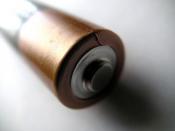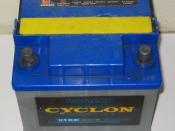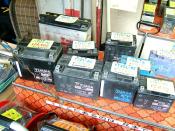In this article, we will examine solar cells to learn how they convert the sun's energy directly into electricity. In the process, you will learn why we are getting closer to using the sun's energy on a daily basis, and why we still have more research to do before the process becomes cost effective. The solar cells that you see on calculators and satellites are photovoltaic cells or modules (modules are simply a group of cells electrically connected and packaged in one frame). Photovoltaics, as the word implies (photo = light, voltaic = electricity), convert sunlight directly into electricity. Once used almost exclusively in space, photovoltaics are used more and more in less exotic ways. They could even power your house. How do these devices work? Photovoltaic (PV) cells are made of special materials called semiconductors such as silicon, which is currently the most commonly used. Basically, when light is shined onto the cell, the semiconductor material absorbs some of the light.
So if the semiconductor is absorbing some light, this means that it is also absorbing the energy from the light. Electrons can by knocked loose by the absorbed energy, which causes the electrons to flow freely. Electric fields from the PV cells actually force the freed electrons to flow in a certain directions. This flow of electrons is called a current. For us to use this current externally, we just have to place metal contacts on the top and bottom of the PV cell. The current produced, together with the cell's voltage produced by the electric fields, helps us figure out how much power or wattage that a single solar cell can produce.
What kind of batteries are used in PV systems? Although several different kinds are commonly used, the one characteristic that they should all...


